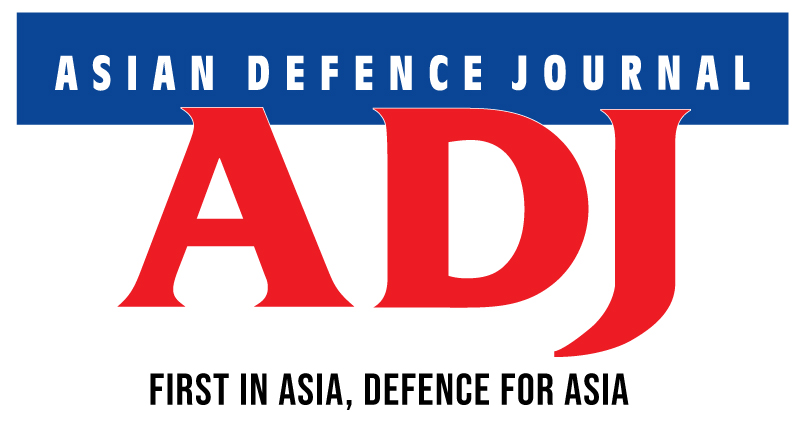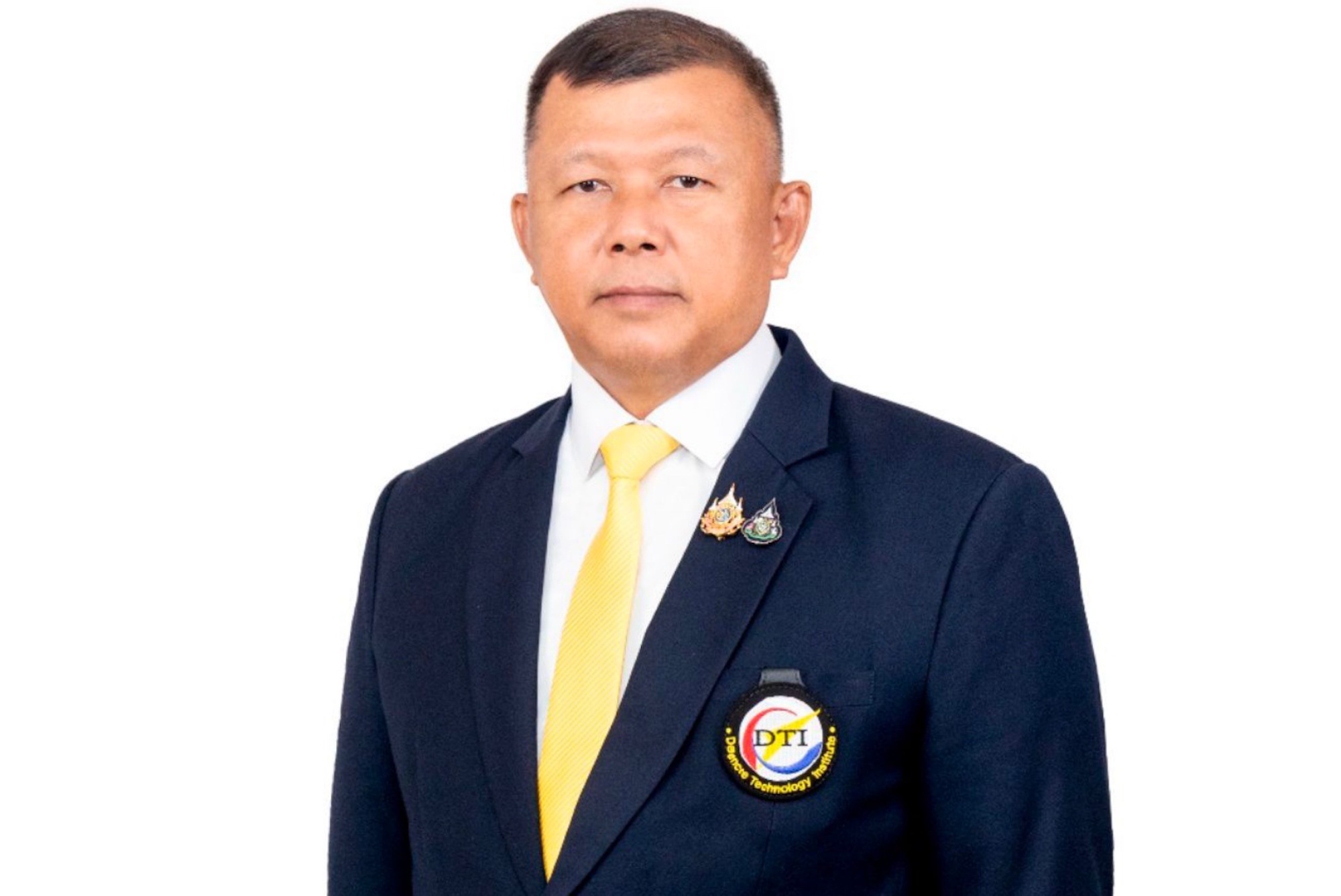Dr Charat Umsamrit, Director-General, Defense Technology Institute Thailand
‘Building Thailand’s Defence Industry for the Future’ – DTI
At Defence & Security 2025, ADJ Today posed some questions to the Defense Technology Institute of Thailand Director-General, Dr Charat Umsamrit…
ADJ: Can you update us on the DTI’s journey towards a greater Thai defence industry?
D-G: Over the past decade, the DTI has made steady progress towards building a stronger and more self-reliant Thai defence industry. Guided by the Defense Technology Act of 2019 and the 20-Year National Strategy, we have focused on three main priorities. First, developing indigenous capabilities through research and innovation in areas such as unmanned systems, munitions, armoured vehicles and cyber defence. Second, fostering international collaboration and technology transfer with trusted partners to localise production and strengthen the Thai Defense Industrial Base. And third, advancing the DTI Industrial Estate, which will serve as a central hub for defence innovation and cooperation among industry, academia and government. Together, these efforts reflect Thailand’s commitment to achieving defence self-reliance while contributing to regional stability and technological advancement.
ADJ: What would you say is the top priority for Thailand’s defence industry, as the country is already capable of making world-class armoured vehicles and innovative unmanned solutions?
D-G: While Thailand has made significant progress in developing advanced armoured vehicles and unmanned systems, our top priority now is to build a fully integrated and sustainable defence industrial ecosystem. This means strengthening local supply chains, promoting co-production and technology transfer, and ensuring that our defence industry is supported by research institutions, skilled human capital and modern infrastructure. In essence, Thailand’s goal is not only to produce world-class platforms, but to create a resilient, self-sustaining defence industrial base that contributes to national security, economic growth, and regional cooperation.
ADJ: As modern warfare continues to evolve, what lessons have the DTI taken to keep up with the trends in recent conflicts across the planet?
D-G: Recent conflicts have reaffirmed that technological adaptability and industrial resilience are critical to national defence. The DTI recognises that future warfare will be driven by information superiority, autonomy and rapid production capacity. Therefore, we are focusing on developing unmanned and autonomous systems, enhancing cyber and electronic defence, and promoting joint research between the military, industry and academia to accelerate innovation. Equally important is supply chain resilience and self-reliance, ensuring Thailand can sustain defence operations and production independently during times of crisis.
ADJ: Would you be able to tell us more about the DTI’s industry partnerships in recent years?
D-G: The DTI has prioritised strategic partnerships that enhance Thailand’s technological capacity and strengthen our defence industrial ecosystem. These collaborations span across Asia, Europe and the United States, focusing on co-development, technology transfer and industrial participation. In land systems, we have partnered to modernise armoured vehicles; in the unmanned and autonomous systems sector, we have co-developed solutions for surveillance, logistics and security operations. Through the DTI Industrial Estate, we continue to expand cooperation with academic institutions and private industry, creating a platform for innovation, testing and co-production.
ADJ: With a growing defence industry, what are some of the challenges that the DTI is facing at this time?
D-G: As Thailand’s defence industry expands, the DTI faces several natural challenges of growth. First, aligning industrial capacity with long-term strategic needs requires sustained investment and close coordination between government, armed forces and industry. Second, technology transfer and workforce development remain critical; we must ensure our engineers and scientists have the skills to manage and innovate advanced systems. Third, building supply-chain resilience and ensuring access to critical materials are global challenges that we are addressing through localisation and dual-use innovation. These challenges are also opportunities – to strengthen governance, deepen partnerships and advance Thailand’s path toward sustainable defence self-reliance.
ADJ: Can you tell us more on how the DTI’s innovations have contributed to recent security operations around Thailand?
DG: The DTI’s innovations have directly supported Thailand’s security and stability. Our unmanned aerial and ground systems have enhanced surveillance, border security, and disaster response operations – providing real-time intelligence while reducing risk to personnel. Our armoured vehicle modernisation programmes and command-and-control technologies have strengthened operational effectiveness and coordination among defence units. These achievements reflect the DTI’s mission to turn research and innovation into practical capabilities that safeguard the Thai people and enhance national defence readiness.
ADJ: As Thailand continues to build up its armed forces by procuring advanced materiel from overseas, how does the DTI aim to maximise its role in these procurements and reinforce the transfers of technology and know-how?
D-G: The DTI ensures that every major defence procurement contributes to technological self-reliance and industrial development. We work with the Ministry of Defence, the armed forces and international partners to include technology transfer, co-production and local industry participation within procurement frameworks. The DTI also serves as a technical advisor and coordinator, ensuring that imported systems become opportunities for knowledge exchange and capacity building. This approach aligns with Thailand’s broader strategy – to transform foreign procurements into platforms for innovation, human capital development and long-term sustainability.
ADJ: Aside from global partnerships, what is the DTI’s role in building strategic regional partnerships with prominent ASEAN defence industries?
D-G: Regional cooperation is a cornerstone of the DTI’s strategy. Within ASEAN, our mission is to create mutually beneficial defence industrial partnerships that strengthen both regional stability and technological advancement. The DTI collaborates with ASEAN defence industries, research centres and private-sector partners to promote joint development, testing and co-production in areas such as unmanned systems, cyber defence, munitions and maintenance. Our ultimate goal is to position Thailand as a regional hub for defence innovation and collaboration, advancing ASEAN’s vision of self-reliance and shared progress.
ADJ: With major global defence industry companies gathering in Bangkok now, what does the DTI aim to accomplish at Defence & Security 2025?
D-G: This exhibition is a valuable opportunity to showcase Thailand’s defence industrial capabilities and to strengthen international partnerships. The DTI’s objectives are to demonstrate Thailand’s technological achievements, engage new partners and investors to promote co-production and technology transfer, and position the DTI as a trusted national platform linking government, academia and industry. Through these efforts, the DTI underscores Thailand’s readiness to collaborate with global partners toward a more innovative, self-reliant, and sustainable defence future.
ADJ: What is your vision for the DTI and Thailand’s defence industry?
D-G: My vision is for the DTI to lead Thailand toward defence self-reliance through innovation, collaboration and sustainability. The DTI will continue to serve as the driving force of national defence technology development, building a resilient and competitive industrial ecosystem that supports national security and contributes to global stability. Ultimately, we aspire for Thailand to be recognised as a trusted regional hub for defence innovation – capable of designing, producing and sustaining its own technologies while sharing knowledge and cooperation with partners around the world.


